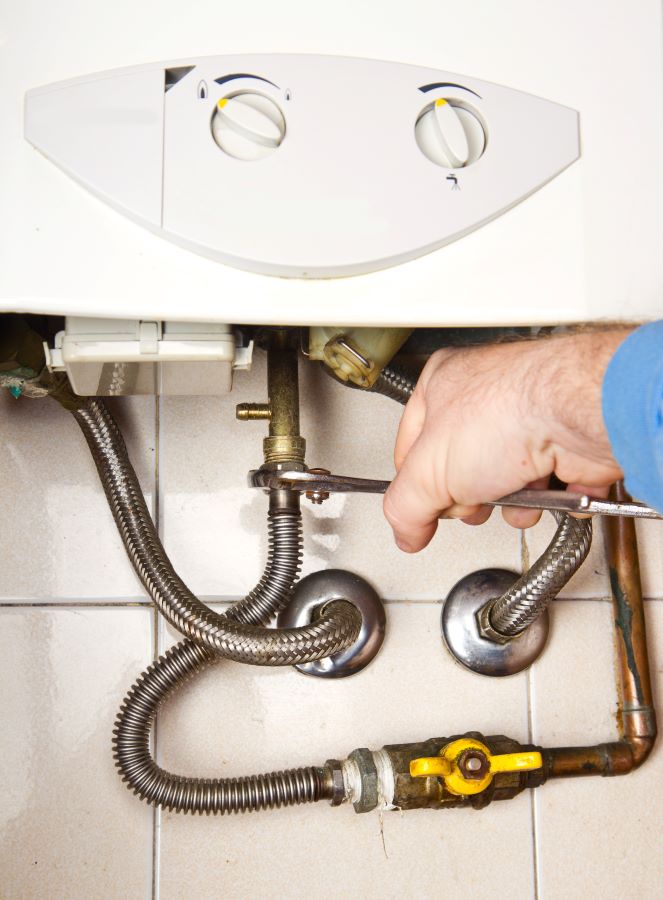Plumber in Flagstaff
Mountain High Plumbing is proud to have been a household name in Flagstaff since 1994. Our humble plumbing company has been family-centered from the start, with Jim Velez, Sr. starting the business alongside his wife, Alana, and his son, Jimmy. Jim Sr. and Jimmy each bring a unique set of skills to the table, which means our customers always get the very best service from our local, family-owned business. At Mountain High Plumbing, customer satisfaction is a guarantee.
Our well-established Flagstaff plumbing company has built and maintained a reputation of excellence because we’ve kept our focus clear from the start. Our top-quality workmanship is backed by extensive experience, and our affordable pricing sets us apart. Our bonded, insured, and licensed plumbers are as dependable and trustworthy as can be. In fact, our team is full of the most hardworking, seasoned, and committed individuals you’ll find anywhere. Give our Flagstaff plumbing service a call today and we’ll be happy to show you firsthand exactly what makes us the premier plumbing business in Northern Arizona.
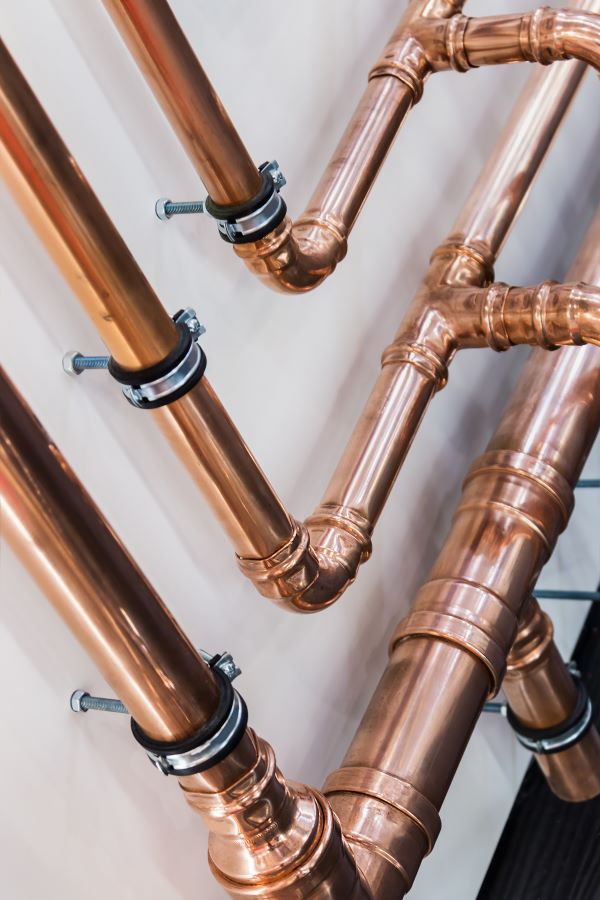
The Top 5 Most-Used Plumbing Pipe Materials
PEX Pipes
This type of piping comes in three colors, which each serve different purposes: red for hot water, blue for cold water, and white for water of any temperature. Our highly experienced local plumbers appreciate PEX piping because it is extremely durable, easy to bend, and practical, making it capable of serving many purposes. It is also a very rigid, affordable, and expandable material.PVC Pipes
PVC is typically preferred over galvanized steel piping because it is more cost-effective and durable. This type of piping is often used for waste line purposes and is a highly popular material option, but it isn’t capable of handling high water pressure.Copper Pipes
Copper pipes, known for their chemical stability, ease of cutting, and remarkable durability, find common application in household fixtures such as sinks, tubs, and showers - albeit at a relatively higher cost than alternatives. They are commonly used for household water lines.Cast Iron Pipes
This piping material is considered outdated because it has a number of drawbacks - the heavy material easily corrodes, causes many problems that can be expensive for homeowners, deteriorates gradually, and inevitably leads to sewer backups. It was once a popular choice for its practicality, damage resistance, and durability, so our plumbers near you frequently encounter it in sewer drain lines of homes constructed in the '70s and '80s.CPVC (Chlorinated Polyvinyl Chloride) Pipes
CPVC pipes come with certain limitations. They cannot tolerate elevated temperatures, making them less suitable for areas that experience temperature fluctuations. Their brittleness adds to their drawback list, and they command a price tag that's nearly double that of standard PVC alternatives. Despite these disadvantages, this durable and strong polymer is non-corrosive and quick to install, surpassing copper piping in these aspects.Dealing with Frozen Pipes
When and where might my pipes freeze?
Prolonged exposure to severely low temperatures poses the highest risk of pipe bursts, with water being able to freeze within just six hours. The greatest risk occurs when temperatures fall below 20 degrees, while pipes can generally freeze at temperatures below 32 degrees. Pipes are most prone to freezing in common locations like exterior walls, attics, and crawl spaces. What proactive steps can prevent frozen pipes? Certain measures significantly reduce the risk of frozen pipes and the problems they can bring. Our insured plumbers suggest keeping under-sink cabinet doors open and maintaining an indoor temperature of 55 degrees or higher to help pipes stay warm. Before freezing temperatures arrive, shut off outdoor spigots and drain the lines. Use your faucets regularly and allow a small amount of cold water to flow from a far faucet to maintain circulation. It’s also smart to consult your plumber for advice about insulating your water tank and pipes. By following these guidelines, you can keep your plumbing in good shape during cold weather.
How can pipes be insulated?
Since every home has a unique plumbing layout, your plumbing contractor will start by assessing the most suitable method for insulating your pipes. This often entails selecting an appropriate insulation material (which might also include heat tape or heat cables) to shield pipes located in crawl spaces, exterior walls, or unheated attics. By calling our plumbing service in Flagstaff and implementing these solutions, your pipes will be well-prepared to endure cold temperatures, reducing the risk of freezing or bursting.
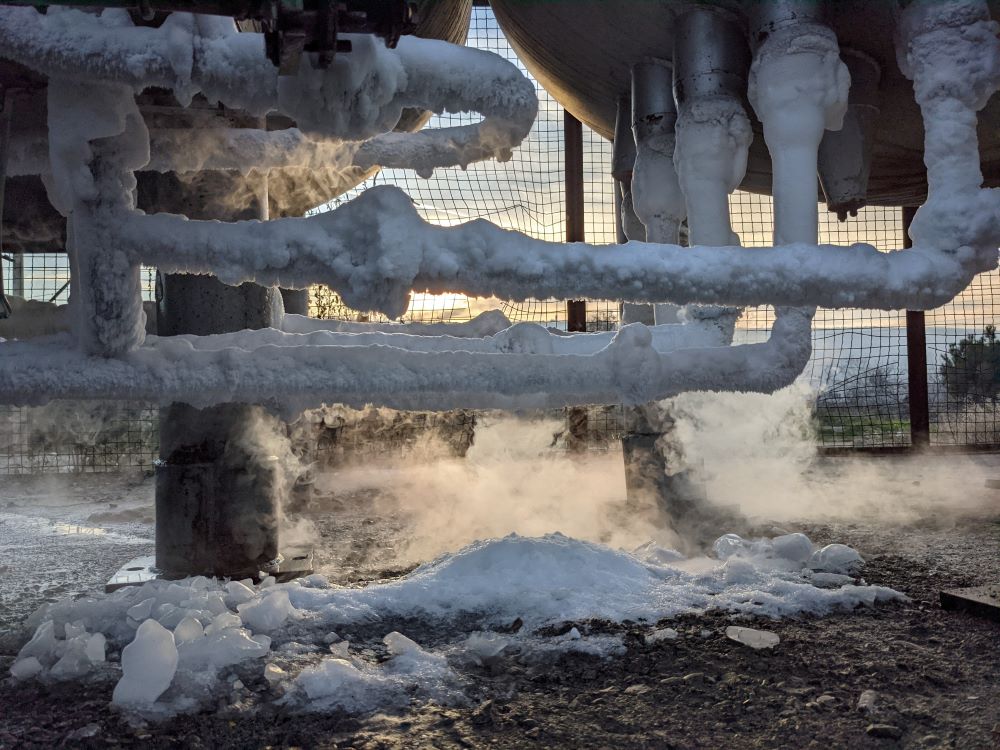
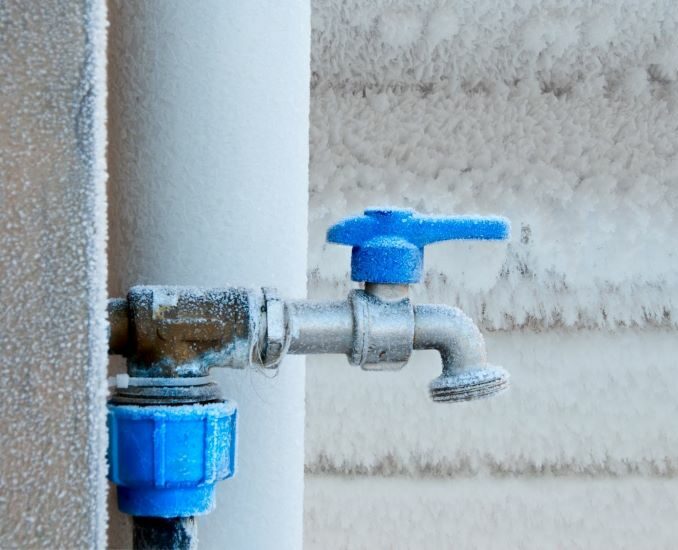
How can I thaw my frozen pipes?
Before attempting to thaw your own pipes, it’s important to note that there are certain risks involved - water damage, cracks or melting if plumbing is overheated, and more. If you aren’t confident trying to thaw them yourself or if you think a pipe has burst or cracked, please call our 24/7 plumber right away at (928) 774-3593. You can also try following the instructions below, but you should call your emergency plumber if the plumbing problem isn’t solved using these techniques. Mountain High Plumbing is here to help in your time of need.- Talk to your neighbors. You can suspect a water main break (rather than frozen pipes) if they have the same issues.
- Shut off the water by turning off the main supply.
- Open every faucet.
- Warm pipes with a blow dryer, but carefully avoid anything flammable.
- Slowly turn the water supply back on and evaluate the situation. Check for pooled water (which is an indicator of a burst or cracked pipe), leaks, and/or cracks.
My pipes are frozen - what do I do?
The most urgent matter is to turn off your main water valve if your pipes are frozen. After this, you can either call Mountain High Plumbing or try to thaw them first. If your water meter freezes, your only option is to call your water company, as serious damage can occur otherwise. To avoid an expensive and complex plumbing repair, it’s essential to take a proactive and pragmatic approach.Dealing with Toilet Problems
Our local plumbers in Flagstaff are happy to share some expert tips on handling some of the most common toilet issues.My toilet is clogged or flushes slowly.
The first step is to use a plunger and try to clear the clog. If a conventional plunger doesn’t help, you may have a complicated clog that requires a plumber to use a plumbing snake. As a toilet ages and accumulates debris, rust, lime, or calcium buildup, it can also become less efficient at flushing. This type of problem is resolved by having your Flagstaff plumbing contractor install a new toilet.My toilet is running continuously.
You may have a flush valve leak at the base of the toilet tank. An askew or flawed fill valve may also be the culprit.I have a water supply leak.
Signs of this problem include a steady increase in water bills, pooled water, diminished water flow, or noisy pipes. After shutting off your water supply, give our plumbing service a call so we can help you avoid significant and extensive issues.My toilet is leaking where the tank meets the toilet bowl.
If you notice this problem, your plumber will need to drain the tank, remove it, and replace a gasket.My toilet is leaking around the base.
If you are seeing water accumulate around the base of your toilet as the day wears on or right after you flush, there is probably a problem with your wax ring. Whether the ring is incorrectly installed, worn, or defective, we’ll need to drain the toilet tank, remove the entire toilet, and replace this ring. Some more extensive leaks might require a new tank and toilet as well.My toilet is overflowing.
If you have this problem, you should call Mountain High Plumbing for immediate plumbing services. If you see a valve connecting the toilet pipe to the tank, turn this off. If not, shut off your water supply until we have come to the rescue. This issue indicates a severe pipe clog, plumbing vent blockage, sewage problem, or full septic tank.I need a new toilet installed.
Toilet installation is a common task for our highly experienced plumbers. We’ll start by uninstalling your old toilet. After an inspection of the flange and installation of a fresh wax ring, we will settle the toilet into position. We will then bolt the toilet down and install the other parts, including the seat, tank, and lid. If you’ve chosen a model with electrical features, bidets, or other functions, we’ll take the additional steps to install those components as well. We don’t finish an installation without testing for leaks and confirming a good install. Call us to install any toilet, including gravity-fed, dual-flush, double-cyclone, two-piece, wall-hanging, pressure-assisted, comfort-height, waterless, or one-piece models!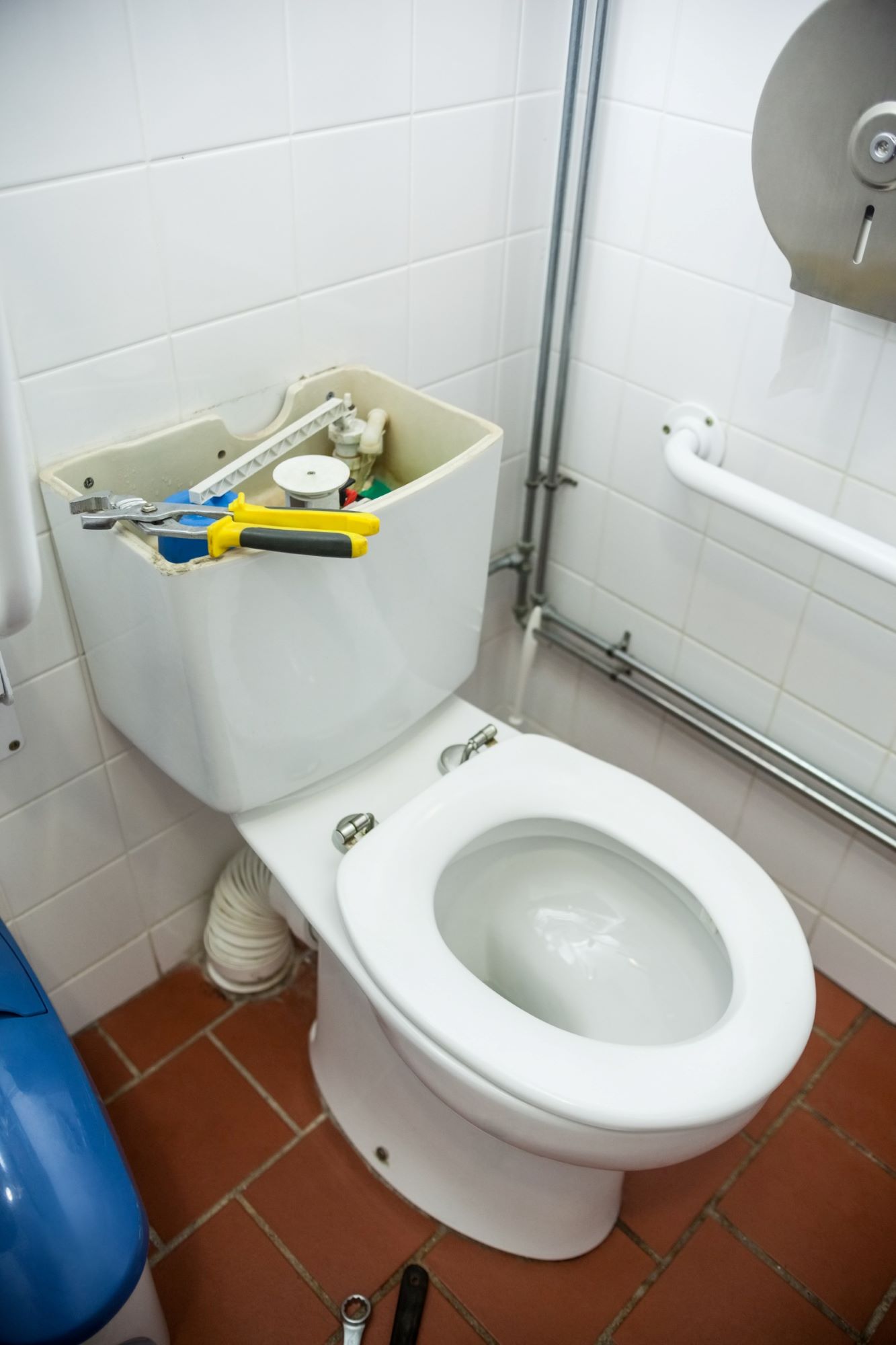
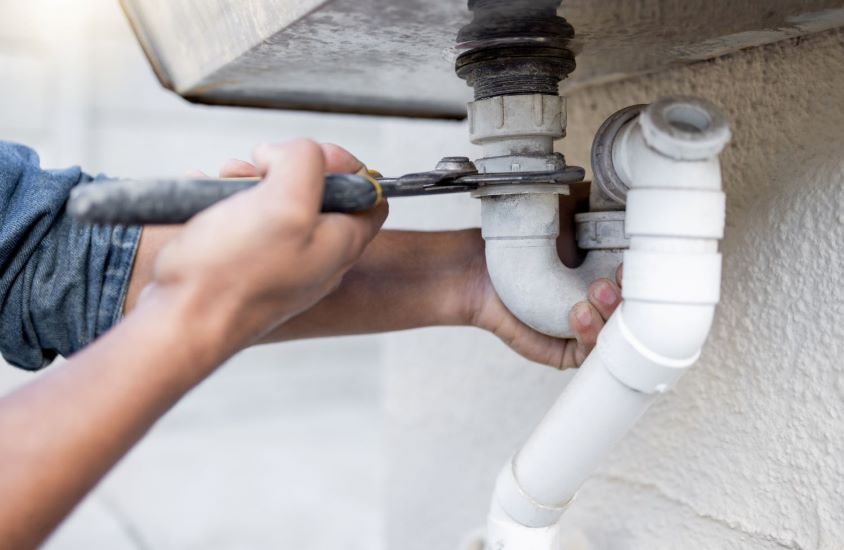
Dealing with Bathroom Sink Problems
There are a number of common sink-related issues, and many of the following statements apply to homeowners with these easy-to-recognize issues.I have a leaky faucet.
The most likely causes of this issue are a damaged washer, faulty o-ring, defective valve seat, corrosion, or general wear. Our pros will get to the root of the problem and get any repairs completed quickly.My drain is slow or clogged.
First, check your drain stopper to see if there is buildup under the drain opening on the horizontal pivot rod. If the stopper checks out, you likely have a clog caused by hair or soap scum. You’ll need to contact Mountain High Plumbing for diagnosis and repairs.My drain stopper isn’t working.
Stoppers are important because they let your drain open and shut properly. If the stopper has a loose nut or is broken, it won’t function correctly and will likely need to be replaced.My sink caulking is coming off.
Caulking can begin to peel, mildew, crack, or mold over time because of continuous water exposure. We recommend re-caulking every five years.My sink is smelly.
If you smell an odor that reminds you of rotten eggs, you likely have a microbial infection in the drain or the sink overflow passage. These infections can usually be cleared with hydrogen peroxide (3%). If this doesn’t eliminate the odor, give us a call.Dealing with Shower Problems
If any of the following comments apply to you, read on to learn about the most likely causes.My shower head is dripping.
Hard water leads to buildup of magnesium, silica, lime, calcium, and other minerals. This buildup can affect your shower head, and it is often characterized by visible white lines. Soaking the shower head in vinegar can help with this issue. However, shower head problems can also be caused by defective gaskets. If you need help with gasket replacement or another shower head-related task, we are always available.My shower drain is clogged.
Shower drains can become clogged by foreign objects, hair buildup, soap scum, or even a deeper issue like a damaged pipe. Our plumbing experts recommend against trying drain cleaning products, as they can lead to even more serious issues. Instead, try clearing the obstruction with a plastic drain cleaning tool. Our professional tools can help if your own attempts don’t do the trick.My shower drain is stinky.
Seldom-used bathrooms might smell because gas begins to escape from the shower drain P-trap as it remains dry. If the issue lies within a frequently-used bathroom, there could be a sewer gas, mold, or bacterial problem. We can help you move past this unsettling issue quickly and easily.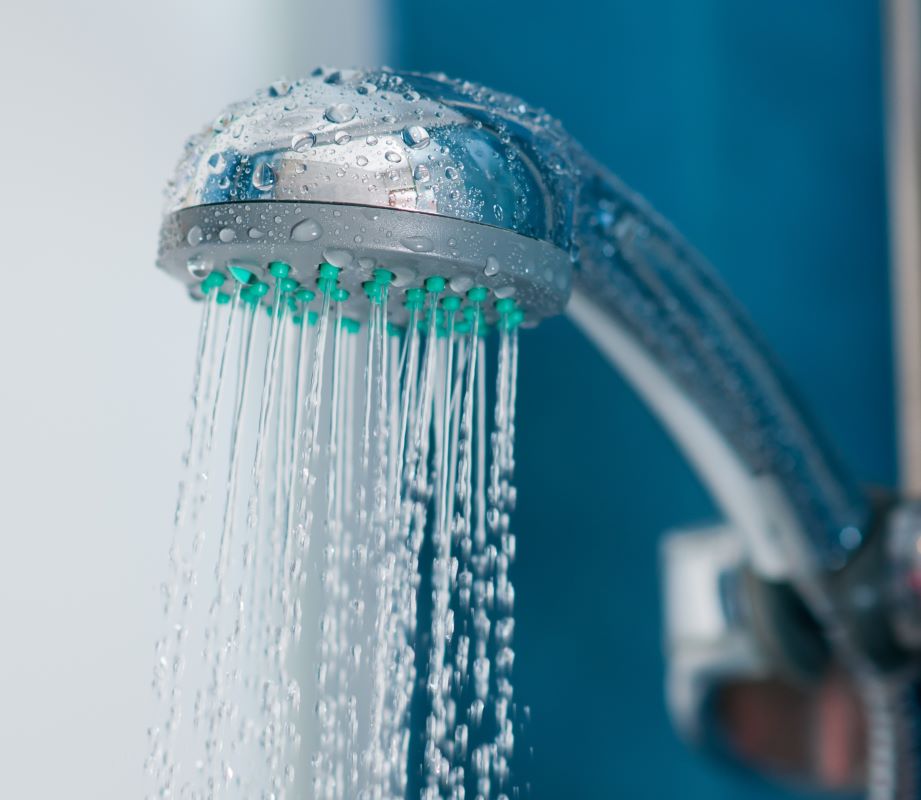
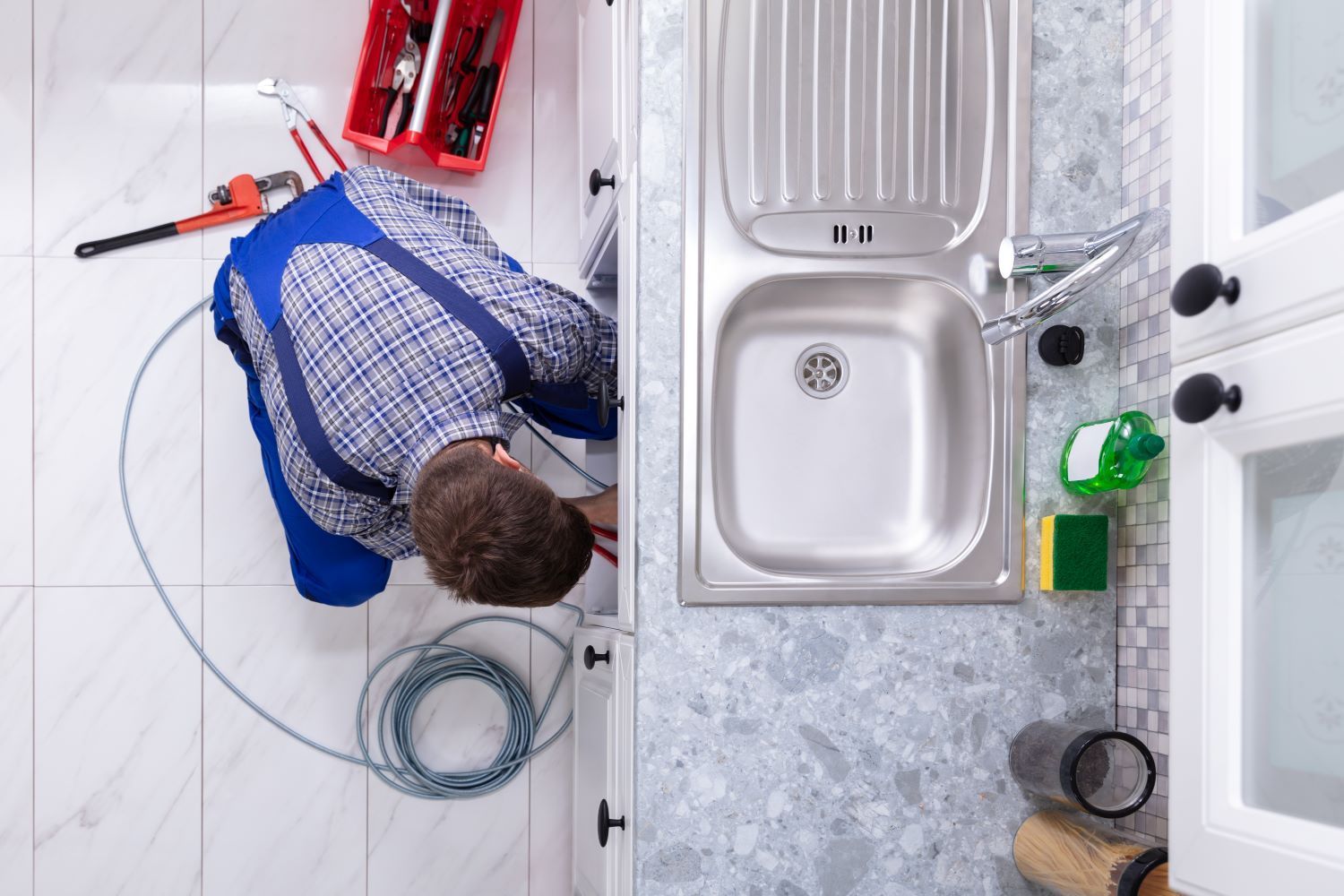
Dealing with Kitchen Problems
If you find any of these situations familiar, let's delve into the potential reasons behind them.My kitchen faucet is leaking.
Most kitchen faucets feature a single-valve cartridge to control hot and cold water flow. This cartridge may need to be replaced if your faucet is dripping.My sink is draining slowly.
Your trusted plumber may need to snake the blockage after opening your drain trap, because kitchen drains are often blocked by food debris, foreign objects, grease, or soap scum.There is a leak in the cabinet under my kitchen sink.
The drain pipe joint is usually the source of this type of leak. We have also seen situations where water supply connections fail and cause a water leak. Human error can be the root cause because hand-tightened fittings at connection points between faucets and water supply pipes may not be properly secured. If your caulking or seals are defective or worn, splashed water might also be leaking into the cabinet below. We can help you by troubleshooting and resolving any of these common issues.Garbage Disposal Installation
Here’s how our skilled plumbers install garbage disposals.- Turn the circuit breaker off and handle electrical wiring carefully.
- Complete drain flange installation.
- Install the mounting ring and gasket.
- Support the disposal and mount it into place.
- Using pipe connectors, secure the discharge pipe (P-trap) to the disposal outlet.
- Ensure that all fasteners at the plumbing and mounting connection points are fully tightened and rule out leaks by operating the disposal and faucet.
Dealing with Pipe Leaks
If any of the situations resonate with you, keep reading to discover the probable reasons.
Water is pooling near my appliance(s).
If this issue is accompanied by condensation on the appliance, the most likely cause is deterioration or breakage of the rubber sealant around the appliance’s connections. If the problem is paired with water leaking from the supply line, you likely have damaged or loose water connectors between your water supply and appliance due to shifting or wear and tear. These causes can be tough to troubleshoot on your own, so give Mountain High Plumbing a call for help.
My water tastes bad, smells bad, or has noticeable discoloration.
Brass pipes have an average lifespan of 70 years and galvanized steel lasts approximately 20 years. As pipes and plumbing components age, they deteriorate, corrode due to pH imbalances or mineral buildup, or start to rust. Left unchecked, you can also encounter leaks, pipe damage, and more - so it’s essential to call your go-to plumbing expert.
I can see damage to my fixtures or pipes.
When physical impact occurs, a fixture crack can occur, which requires rapid repairs.
My pipes have burst but aren’t frozen, toilets are overflowing, or drains are clogged.
Your plumbing lines can become clogged with an air handler drain pan obstruction, gutter debris, chemicals, hair, and a slew of other things. Severe clogs can cause significant, urgent plumbing problems.
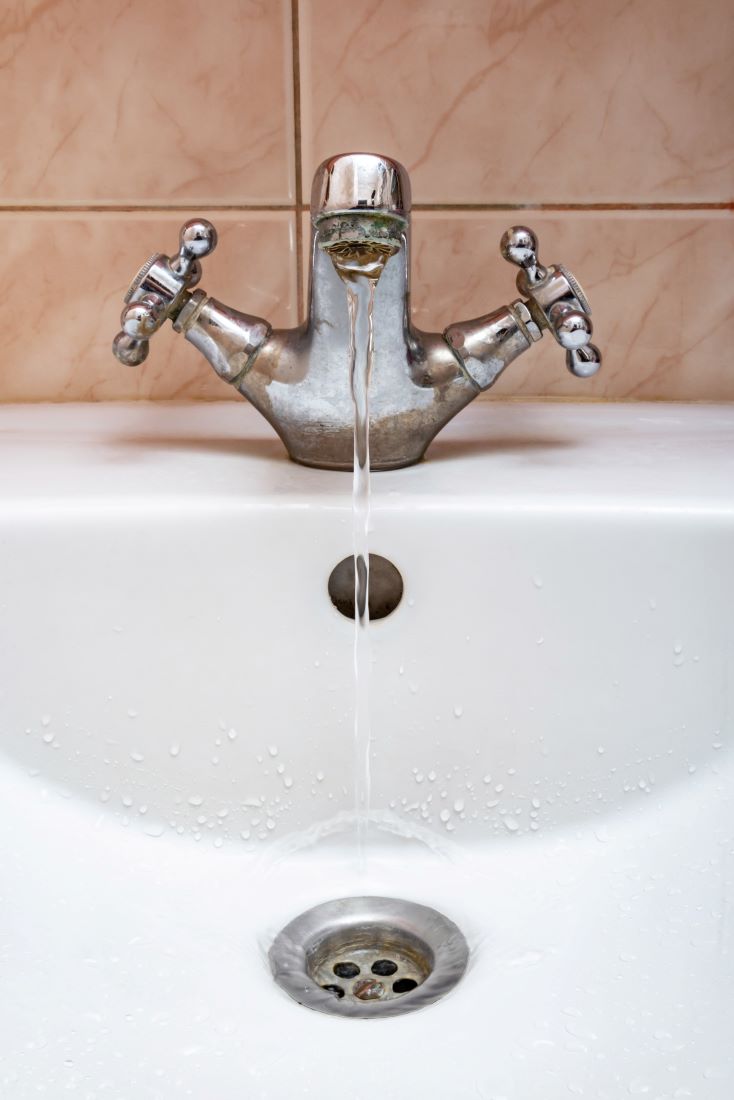
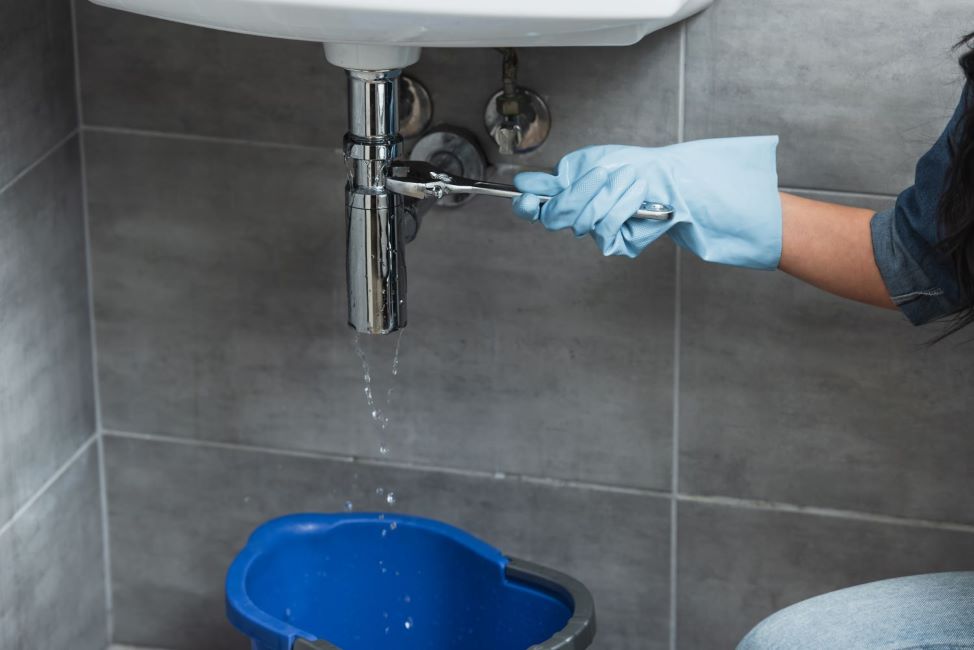
I hear a ticking or banging noise in my pipes, especially when I use hot water.
Since pipe joints consist of so many pieces and they are subjected to consistent water flow, pipe joint damage is not uncommon. This type of damage can be caused by extreme temperatures, high water pressure, or age, and it will require joint replacement.
I have a water leak accompanied by high water bills, damaged appliances, and/or a running toilet.
Pipes are designed to withstand many challenges, but high water pressure can cause them to leak or even burst. Our diagnostic testing will include checking your household water pressure to rule out (or avoid) a problem.
I have a sudden, extensive, and emergent pipe leak.
Not all plumbers are created equally, and the unfortunate reality is that poorly installed pipes can cause significant issues for homeowners. Each pipe and connector must be carefully and meticulously installed by a pro, like the ones at Mountain High Plumbing. Call us for 24-hour emergency plumbing services at (928) 774-3593 so we can put an end to this messy and damaging situation.
I have wet areas or a sinkhole in my yard, an extreme drop in water pressure, and/or trees close to my home.
Tree root systems are quite complicated and can easily interfere with household water lines. Plumbers must perform thorough inspections of pipes and take care of any intrusive roots as early as possible.
My water drains slowly or I have noticeable water supply issues.
Nature is unpredictable, and earthquakes, floods, and other disasters cause the ground to move and shift. This can cause pipes to bend, separate, twist, or crack. Inspections and thorough plumbing repairs must take place when these disasters strike.
The Power of Hydro Jetting
Hydro jetting is a cutting-edge method that employs a unique, high-pressure water hose to thoroughly cleanse your plumbing system. The process commences with a preliminary inspection using a specialized camera to detect any existing damage that may hinder the use of hydro jetting equipment. Once we've established that your system is damage-free, the hydro jetting service begins. This involves skillfully positioning the high-pressure hose and connecting it to a professional-grade water tank. Ensuring the hose's optimal insertion point is a meticulous step that can’t be overlooked.
With an impressive surge of water pressure, our robust hose, and the force of gravity working in tandem, we get to work. This dynamic synergy propels water through the system at a rate of approximately 20 gallons per minute. The water surges through backward-facing jets, propelling the nozzle through the pipes, and a forward-facing jet further aids in dislodging debris. Hydro jetting doesn't just tackle clogs - it's a comprehensive solution for eliminating grease, tree roots, mineral buildup, and any potential debris that could pose issues down the line. If you're facing a particularly stubborn blockage, your reliable plumbing experts are likely to recommend this method for the most effective results.
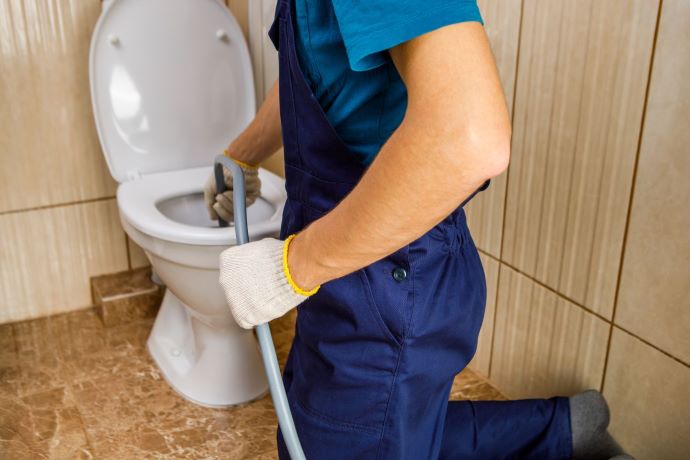
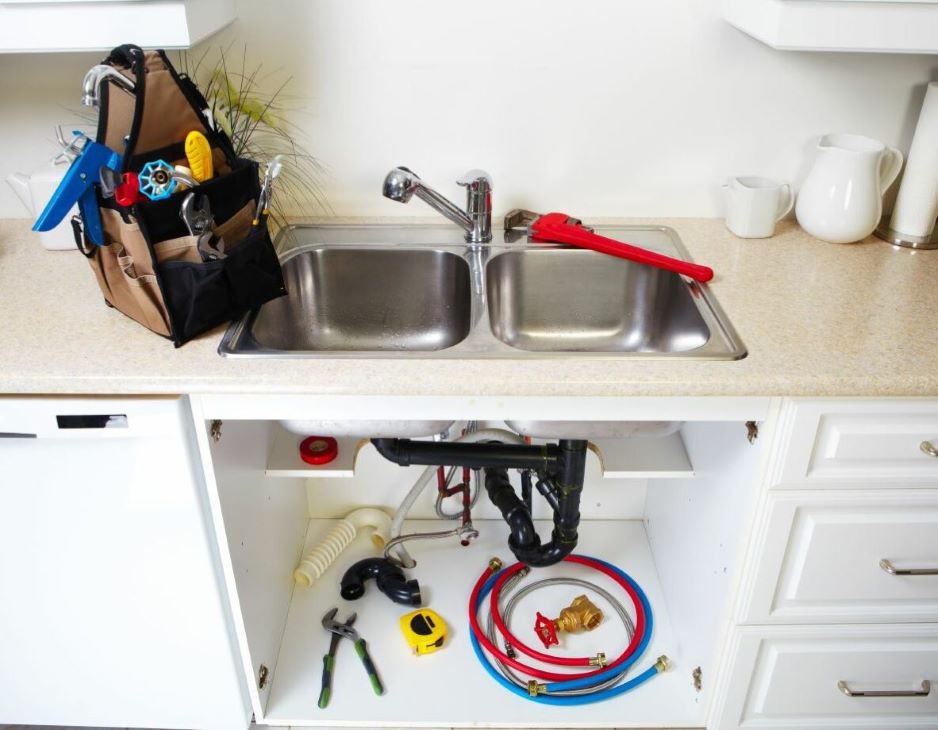
Dealing with Water Pressure Problems
If any of the following circumstances apply to you, continue reading to learn more about the potential causes of your low water pressure.Neighboring homes or businesses have the same water pressure problem I’m experiencing.
If this is the case, there is likely an issue at the level of your water supplier. Call your water company to apprise them of your concerns.My home has old pipes.
If you have galvanized steel piping more than 20 years old, copper piping more than 50 years old, or brass piping more than 40 years old, corrosion is the most likely cause of your water pressure issue. We’ll need to take a look and possibly replace some of your pipes.I’ve noticed wet spots or pooled water on my property.
Leaking pipes misroute water and lead to low water pressure, so these signs indicate the need to call Mountain High Plumbing before the issue worsens in severity.I’m only noticing a water pressure issue with a single fixture in my home.
If you only notice that one faucet or fixture has low water pressure, the fixture itself is the most likely source of the problem. Your skilled plumber may need to eliminate buildup or a clog, or you might need a whole new fixture to replace a faulty one.My area has changed the local water pressure regulations.
If you’ve spoken with your water supplier and confirmed regulation changes, consider having a chat with your plumber about getting a water pressure booster. We'll conduct a thorough check of your plumbing to ensure there are no other concerns before professionally setting up your booster system.My water pressure regulator has no reading or seems inaccurate.
Consider using a water pressure gauge to see your exact water pressure reading. If this gauge and the regulator do not have the same reading or if the regulator has no reading at all, there is probably a problem with the regulator itself. Talk to your go-to expert at Mountain High Plumbing for help diagnosing or replacing your pressure regulator.None of these statements apply to me, but I still have low water pressure.
If you’ve checked everything you can think of and you’re still having a water pressure issue, your water meter valve or main house shutoff valve may not be fully open. The water meter valve, owned by your local water company, regulates water entering your property. The main house shutoff valve, usually near the city supply pipe in your home, also plays a key role. If the main shutoff isn't the problem, reach out to the city to inspect your water meter valve.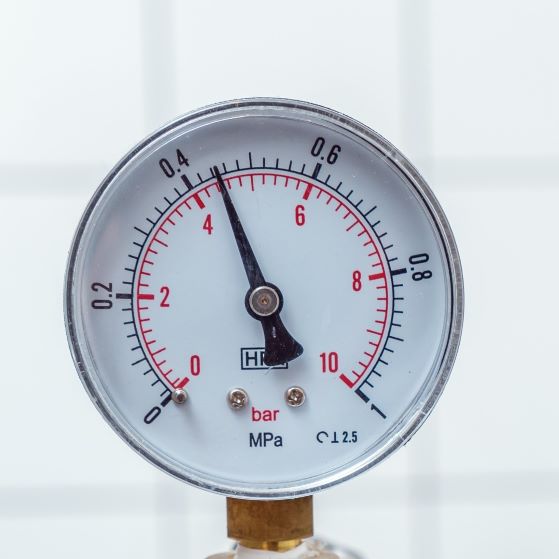
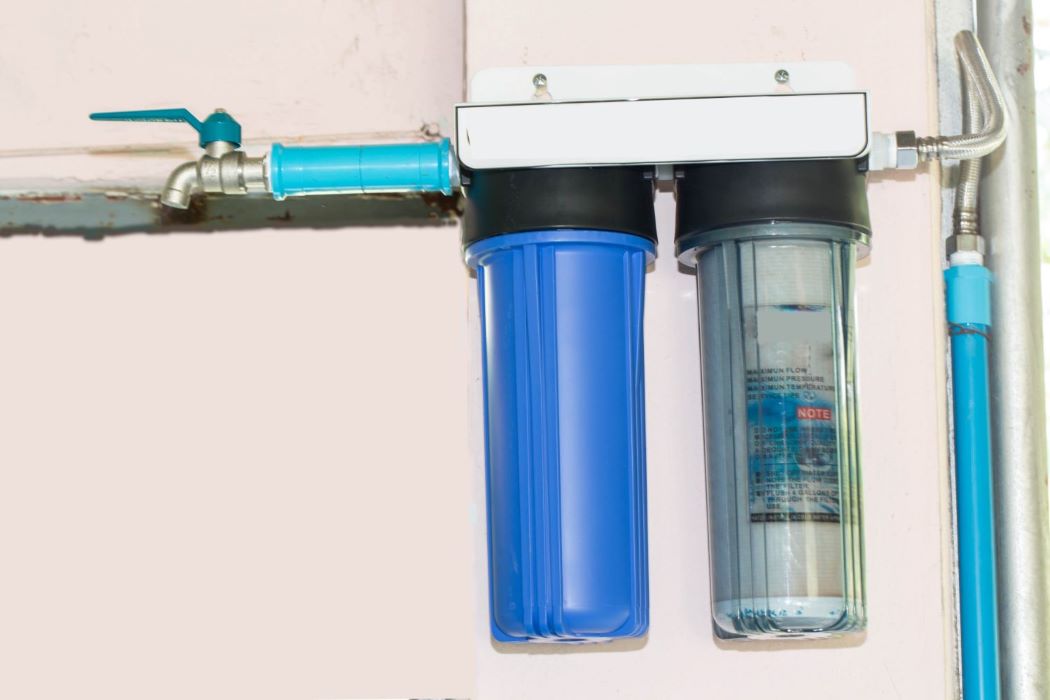
All About Whole Home Water Filtration
City water goes through treatment processes, including pre-filtration, copper-zinc KDF, and activated carbon treatment, to ensure safety. Home water filters are essential for removing various contaminants, such as hard minerals, heavy metals, and chemicals. Filtered water enhances health and prolongs the life of plumbing, faucets, and appliances.
Opting for a whole-house water filtration system is a wise choice with a range of benefits. It guarantees access to safe, great-tasting drinking water, eliminating worries about contaminants and saving money on bottled water while reducing plastic waste. Additionally, the filtration system prevents limescale and mineral buildup, reducing potential plumbing issues and costly repairs. Say goodbye to skin irritants, reduce soap usage, and enjoy cleaner, softer clothes. Overall, investing in whole-house water filtration enhances your quality of life and environmental consciousness while remaining budget-friendly.
All About Gas Piping
Gas piping systems transport natural gas to a property using pressure. Natural gas flows through a series of pipes from areas of higher pressure to places of lower pressure. It passes through a pressure regulator, enters your distribution system, and eventually reaches your home. The journey begins at mainlines, and as it flows through a service line, it's under the ownership of gas utility companies. Everything downstream, located on your property, falls under your responsibility. When you operate a gas stove or furnace, the gas pressure slightly exceeds the air pressure, enabling the heating unit to ignite. The most common gas piping materials are:HDPE
This material can be easily damaged by natural, underground objects like rocks or tree roots, but the plastic lines are flexible and affordable. Much like PVC, HDPE proves its worth as a reliable choice for buried exterior pipeline use.Flexible Corrugated Stainless Steel Tubing
While easy to install, flexible corrugated stainless steel tubing is more susceptible to cracks, making it most suitable for indoor gas piping applications. These flexible tubes prove advantageous in confined areas or disaster-prone zones.Black Iron
This material stands out as the preferred choice for outdoor and indoor gas piping. Renowned for its durability, strength, and heat resistance, it ensures an airtight seal. However, over time, black iron is prone to corrosion, and the sealant applied to it tends to degrade. If your gas system relies on this material, regular maintenance is strongly recommended.Copper
Notably, some municipalities have entirely prohibited the use of copper pipes. They have an average lifespan of approximately two decades and are subject to strict code regulations, restricting their usage in numerous areas.PVC
PVC gas pipes are favored by many plumbers for their affordability, although some regions prohibit their use because they can be prone to breakage during installation. They are a cost-effective option for underground exterior lines due to their corrosion resistance and impressive durability.Galvanized Steel
Galvanized Steel has become less common in modern construction, primarily existing in older buildings due to its extensive labor requirements. It is a sturdy and energy-efficient piping choice, and it is frequently employed for water supply and both exterior and interior gas lines.